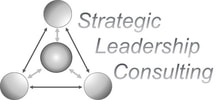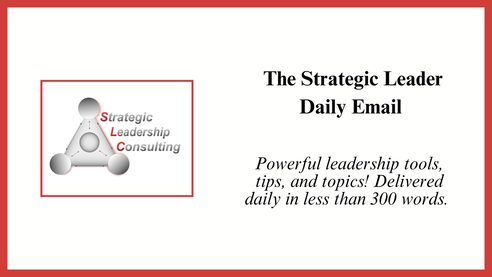|
Colleagues,
This week we’ve looked at three sunrays from our issue “our meetings are unproductive”:
There were six other sunrays. If I had done this with an actual team, we might have had 15-20 sunrays. This can make the stair step process long, but several sunrays will be similar, for example:
These are all permutations of the same concern. It is still valuable to look at each one independently as the change in phrasing can encourage a change in perspective. However, as themes start repeating the process accelerates. Identifying the root problem is critical to acting strategically, but what if you are dealing with an issue that doesn’t deserve an hour of problem identification? Imagine I’m trying to decide what form and amount of communication to share on an issue. I ask “what problem am I trying to solve?” What is the essential purpose of the communication? If there is only one purpose, then my choice should be clear. If there are several, I can work through each option in my head by applying the four prompts. Patterns will arise to help me make an intentional decision. Your turn. Get a team together and tear into an issue. If you already have the sunburst, just do the stair step. Apply the prompts. Let me know how it goes! Do good and be well, Frederick
0 Comments
Colleagues,
Today we look at another sun ray from “our meetings are unproductive.” Today’s sunray is “there is not enough time.” Why is there not enough time?
Not enough time is closely related to too much information (from yesterday). That’s okay because similar sunrays can help us clarify our thinking. Each may encourage different perspectives which may help uncover hidden pieces of the puzzle. Tomorrow, I’ll encourage you to stair step your sunrays from your own issue. Consider getting a few people together tomorrow mid-morning or late afternoon to work through this process. It doesn’t have to be anything intense. You could even do your own on “our meetings are unproductive” and see what you come up with. Though I’m sure your meetings are always super productive =;^} Thanks for the feedback yesterday. If you didn’t respond you have one more chance to let me know what impact this process is having on you and to make suggestions if you have them! Click here to email me. Do good and be well, Frederick Colleagues,
Today we look at another sun ray from “our meetings are unproductive.” Today’s sunray is “too much information.” Why is there too much information?
The organization of this sunray’s stair step is different from yesterday’s. There is no one right way and the final shape is dependent on the ideas. Notice:
It is nice to think that there is a root problem, but often times there are multiple root problems. The good news is that addressing any of them can help improve the situation. We don’t need perfect, just better. “He’s a legend in his own mind.” Writing about this technical exercise is new territory for me and I would like some feedback. Please just click here and tell me whether or not this is working for you. Bonus points for making a suggestion. Do good and be well, Frederick Colleagues,
Today we’ll look at a stair step from last week’s sunburst example. The issue was “our meetings are unproductive.” Today’s sunray is “people have their own agendas.” Why do people have their own agendas?
I wonder…
But…
Aha!
What do see in these responses? Remember, we identified nine sunrays for the unproductive meetings issue, so today is only one example and we can’t draw any conclusions. However, we have learned a couple of things by going deeper:
Think about stakeholders for this issue. If we don’t have them all helping, there are perspectives that will be lost. If there is that “one” person (we’ve all been on teams that had one), how do you facilitate this process with them present? And if they aren’t present, how valid or effective can your outcome be? Tomorrow’s example is too much information. Do good and be well, Frederick Colleagues,
Strategic leaders focus on four things:
The first two steps to getting off the treadmill correspond to those first two bullet points. Two weeks ago, we looked at becoming more intentional with our time. Last week we looked at problem identification, specifically the importance of involving stakeholders, and generating a list of possible problems from a single issue using the sunburst. This week we look at stair stepping, the purpose of which is to dig deeper into each sunray by asking/reflecting on the following:
Asking why again helps uncover additional causes. Often what will happen is that asking why repeatedly leads to deeper issues until the root problem is discovered. Asking why also surfaces similarities and patterns between different sun rays. A hilarious example can be found here. Wondering allows you to take different perspectives. It encourages open thinking and allows you to frame objections in a way that doesn’t shut down other possibilities. Yes, but… is another good way to push back and offer other alternative without shutting off avenues of thought or shutting down a conversation. Aha!s let you note important connections and possibilities without jumping to conclusions and ending discussion prematurely. Aha!s are strong candidates for the root problem, but they are still only candidates. Notice that stair stepping is still about expanding ideas and possibilities, but it also allows for some analysis and prioritizing to begin happening. Tomorrow through Thursday we will look at three examples. On Friday I will encourage and inspire you to apply this tool. Do good and be well, Frederick *This is a tweak from April 13, 2020 in which I emphasized developing instead of managing people. |
Categories
All
Archives
July 2024
|


 RSS Feed
RSS Feed